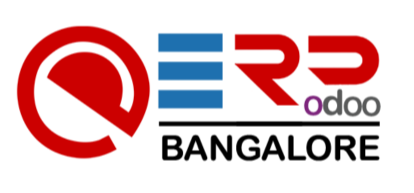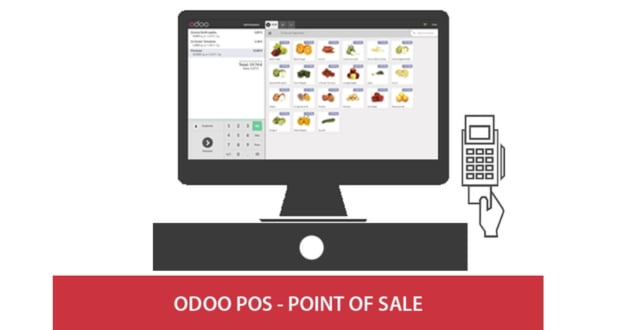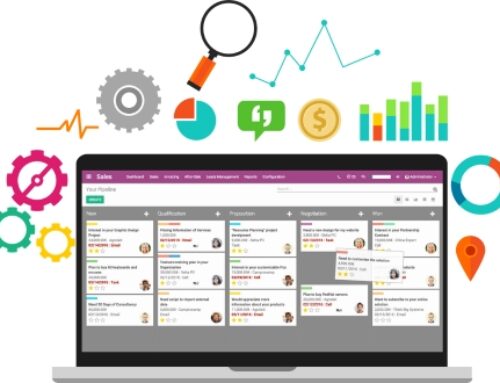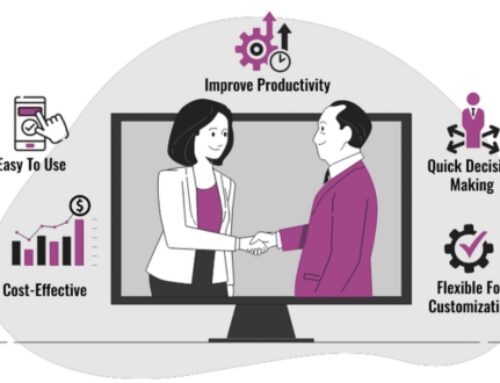Understanding Odoo as an ERP System
Before delving into the specifics of the Odoo Point of Sale module, it’s essential to grasp the broader context of Odoo as an ERP system. Odoo is a comprehensive suite of business applications designed to streamline various aspects of enterprise management, ranging from accounting and inventory to CRM (Customer Relationship Management) and e-commerce. With its modular architecture, Odoo allows businesses to select and integrate specific modules based on their unique requirements, enabling tailored solutions that align with organizational goals.
At its core, Odoo aims to centralize and automate key business processes, fostering efficiency, collaboration, and data-driven decision-making. Whether you’re a small startup or a large multinational corporation, Odoo offers scalability and flexibility to adapt to evolving business needs. Its open-source nature encourages community-driven innovation and customization, making it a popular choice for businesses across industries and sizes.
Introduction to Odoo Point of Sale Module
One of the standout modules within the Odoo ecosystem is the Point of Sale module, which caters specifically to the needs of retail businesses. Odoo Point of Sale serves as a comprehensive solution for managing sales transactions, inventory, and customer interactions in brick-and-mortar stores, as well as in online retail environments.
At its core, the Odoo Point of Sale module is designed to provide retailers with a user-friendly interface that facilitates quick and efficient checkout processes. From scanning products and processing payments to managing discounts and loyalty programs, Odoo Point of Sale streamlines every aspect of the retail transaction cycle. Moreover, its seamless integration with other Odoo modules ensures synchronization of data across the entire ERP system, eliminating silos and enhancing visibility into business operations.
Key Features and Functionalities
- Intuitive User Interface: Odoo Point of Sale boasts an intuitive and customizable interface that simplifies the checkout process for sales associates. With support for touchscreens and mobile devices, the POS interface can be easily adapted to suit various retail environments, whether it’s a boutique store or a large supermarket chain.
- Product Management: The module allows retailers to efficiently manage their product catalog, including inventory levels, pricing, and product variants. With support for barcode scanning and product search functionalities, sales associates can quickly locate items and update stock levels in real-time.
- Payment Processing: Odoo Point of Sale supports multiple payment methods, including cash, credit/debit cards, and mobile wallets, providing customers with flexibility and convenience at checkout. Integration with payment gateways ensures secure transactions and seamless reconciliation of sales data.
- Promotions and Discounts: Retailers can create and manage promotional campaigns, discounts, and special offers directly within the Odoo Point of Sale module. Whether it’s a seasonal sale or a targeted promotion for loyal customers, the system allows for easy configuration and application of discounts at the point of sale.
- Customer Management: With built-in CRM capabilities, Odoo Point of Sale enables retailers to capture and track customer information, including purchase history, preferences, and contact details. This data can be leveraged to personalize the shopping experience, target marketing campaigns, and foster long-term customer relationships.
- Reporting and Analytics: Odoo Point of Sale provides comprehensive reporting tools that allow retailers to gain insights into sales performance, inventory turnover, and customer trends. From sales summaries to stock forecasts, the module equips businesses with the data-driven intelligence needed to make informed decisions and optimize operations.
- Offline Mode: In scenarios where internet connectivity is limited or unreliable, Odoo Point of Sale offers an offline mode that allows sales transactions to continue seamlessly. Once connectivity is restored, the system automatically synchronizes data with the central database, ensuring data integrity and continuity of operations.
Odoo Point of Sale emerges as a powerful and versatile solution for retailers seeking to streamline their operations and elevate the customer experience. With its seamless integration with the broader Odoo ERP ecosystem, the POS module offers unparalleled flexibility, scalability, and efficiency, empowering businesses to adapt to evolving market dynamics and stay ahead of the competition. By leveraging the key features and functionalities of Odoo Point of Sale, retailers can unlock new opportunities for growth, enhance operational efficiency, and build lasting relationships with their customers in today’s dynamic retail landscape.
Tailoring Odoo POS for Restaurants:
-
Customizing Menus and Categories:
This involves creating and organizing menus and categories within the Odoo POS interface to align with the restaurant’s offerings. It may include designing menu layouts, adding menu items, setting prices, and arranging items into logical categories such as appetizers, main courses, desserts, etc. Customization allows restaurants to present their offerings in a clear and visually appealing manner, making it easier for staff to navigate and for customers to make selections.
-
Configuring Table Management:
Table management in Odoo POS involves setting up and organizing tables within the system to facilitate efficient order processing and service. This includes creating table layouts that mirror the restaurant’s physical layout, assigning tables to specific areas or sections, and managing table statuses (e.g., available, occupied, reserved). Configuring table management helps streamline operations by enabling staff to track table occupancy, manage reservations, and efficiently assign orders to the appropriate tables.
-
Integrating with Kitchen Displays and Printers:
Integrating Odoo POS with kitchen displays and printers enhances communication and coordination between front-of-house and back-of-house operations. Orders taken through the POS system can be automatically sent to kitchen displays or printers, reducing the need for manual order relay and minimizing errors. This integration improves order accuracy, speeds up order fulfillment, and enhances overall kitchen efficiency. Additionally, kitchen staff can easily track and manage incoming orders, prioritize tasks, and ensure timely preparation and delivery of meals to customers.
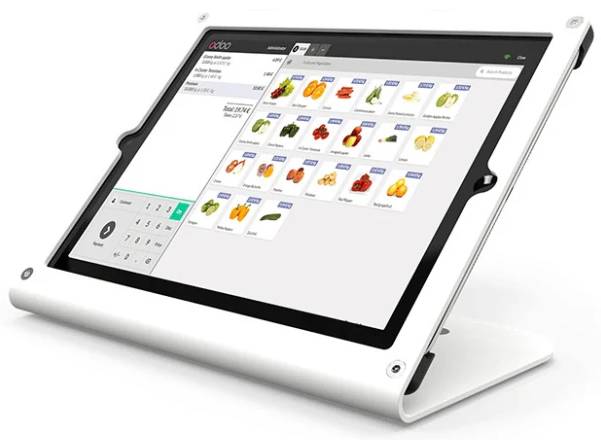
The Evolution of Restaurant POS Systems with Odoo
A Brief History of POS Systems in the Restaurant Industry
The roots of POS systems trace back to the late 19th century when mechanical cash registers were first introduced to retail stores and restaurants. These early devices allowed businesses to record sales transactions and calculate totals with greater accuracy and efficiency than manual methods.
As technology progressed, electronic cash registers emerged in the mid-20th century, offering additional functionalities such as barcode scanning and inventory tracking. However, it wasn’t until the late 20th century that the modern POS system as we know it began to take shape with the integration of computers and software.
In the 1980s and 1990s, the restaurant industry witnessed a surge in the adoption of computer-based POS systems. These systems revolutionized operations by enabling faster order processing, inventory management, and sales reporting. With the advent of the internet and cloud computing in the 21st century, POS systems evolved further, becoming increasingly sophisticated and customizable to meet the diverse needs of restaurants of all sizes.
Challenges with Traditional POS Systems
While traditional POS systems have undoubtedly enhanced operational efficiency in restaurants, they are not without their challenges. One of the primary issues faced by restaurants is the lack of flexibility and scalability inherent in many legacy systems. Traditional POS solutions often rely on proprietary hardware and software, making it difficult and costly for businesses to customize or upgrade their systems as their needs evolve.
Additionally, the complexity of traditional POS systems can pose a steep learning curve for restaurant staff, leading to inefficiencies and errors in order processing and customer service. Moreover, many legacy systems operate in silos, with separate modules for point of sale, inventory management, and customer relationship management, leading to fragmented data and cumbersome workflows.
Another significant challenge faced by restaurants is the high upfront costs associated with acquiring and implementing traditional POS systems. From hardware purchases to software licenses and ongoing maintenance fees, the initial investment required can be prohibitive for small and medium-sized businesses, limiting their ability to compete effectively in the market.
How Odoo POS Addresses These Challenges
Enter Odoo POS – a revolutionary solution that is transforming the way restaurants operate and engage with their customers. Built on the principles of simplicity, flexibility, and affordability, Odoo POS offers a comprehensive suite of features designed to streamline operations, enhance customer service, and drive business growth.
One of the key advantages of Odoo POS is its modular and customizable nature. Unlike traditional POS systems that lock businesses into rigid frameworks, Odoo POS allows restaurants to tailor the system to their specific needs and preferences. Whether it’s adding new menu items, customizing order workflows, or integrating third-party applications, Odoo POS offers unparalleled flexibility, empowering businesses to adapt and innovate in a rapidly changing market.
Moreover, Odoo POS operates on a unified platform that seamlessly integrates with other modules such as inventory management, accounting, and CRM. This integrated approach eliminates the need for disparate systems and manual data entry, enabling real-time visibility into sales, inventory levels, and customer interactions. By centralizing data and streamlining processes, Odoo POS enables restaurants to make more informed decisions, optimize resource allocation, and deliver personalized experiences to their customers.
In terms of usability, Odoo POS sets a new standard for simplicity and intuitiveness. With its intuitive touchscreen interface and user-friendly design, even novice users can quickly learn to navigate the system with minimal training. This not only reduces the time and cost associated with staff training but also enhances overall efficiency and accuracy in order processing and customer service.
Another standout feature of Odoo POS is its affordability and scalability. Unlike traditional POS systems that require substantial upfront investments, Odoo POS operates on a subscription-based model with no long-term contracts or hidden fees. This makes it accessible to businesses of all sizes, from small independent eateries to multi-location chains. Moreover, as businesses grow and expand, Odoo POS can easily scale to accommodate their evolving needs, ensuring a seamless transition without disruption to operations.
Features and Functionalities
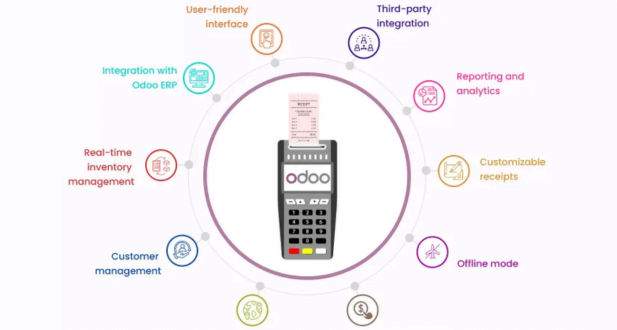
-
Seamless Order Management
Efficient order management lies at the heart of any successful restaurant operation. Modern restaurant management systems offer robust features to streamline the entire order process, from table management and reservations to order customization and payment flexibility.
Table Management and Reservations: With table management features, restaurant staff can easily organize seating arrangements, manage reservations, and optimize table turnover. Advanced systems even provide visual floor plans, allowing hosts to efficiently allocate tables based on party size and preferences.
Order Customization and Modifications: Catering to the diverse preferences of customers is made seamless with order customization capabilities. From dietary restrictions to specific requests, modern POS systems empower staff to tailor orders according to individual preferences, ensuring customer satisfaction with every meal.
Split Bills and Payment Flexibility: Gone are the days of manual bill splitting headaches. With split bill functionality, diners can effortlessly divide the check among themselves, whether it’s splitting evenly or itemizing individual expenses. Additionally, integrated payment options provide flexibility, allowing customers to pay using various methods, including cash, credit/debit cards, and mobile wallets.
-
Inventory and Stock Control
Effective inventory management is crucial for controlling costs, minimizing waste, and ensuring smooth operations. Restaurant management systems offer advanced inventory and stock control features to streamline the process and optimize inventory levels.
Real-time Inventory Tracking: Say goodbye to manual inventory counts and stockouts. Modern POS systems offer real-time inventory tracking, providing accurate insights into stock levels and ingredient usage. This enables managers to make informed decisions regarding stock replenishment and menu offerings.
Automated Stock Replenishment: By setting up automated stock replenishment triggers, restaurant owners can ensure that essential ingredients are always in stock without the need for constant manual intervention. This not only saves time but also helps prevent instances of running out of key ingredients during peak hours.
Ingredient-level Inventory Management: Granular control over inventory is made possible with ingredient-level inventory management. This feature allows managers to track individual ingredients, monitor usage patterns, and identify opportunities for cost optimization. Moreover, it facilitates better management of perishable items, reducing instances of spoilage and waste.
-
Customer Relationship Management (CRM)
Building and nurturing customer relationships is essential for long-term success in the restaurant industry. CRM features integrated into restaurant management systems help businesses create personalized experiences, foster customer loyalty, and drive repeat visits.
Customer Database and Profiles: By maintaining a centralized customer database, restaurants can capture valuable information about their patrons, including contact details, dining preferences, and order history. This data forms the foundation for personalized interactions and targeted marketing campaigns.
Loyalty Programs and Rewards Management: Rewarding loyal customers is made effortless with built-in loyalty program features. From points-based systems to tiered rewards, restaurant management systems enable businesses to incentivize repeat visits and encourage customer loyalty. Furthermore, automated rewards management simplifies the process of issuing and redeeming rewards, enhancing the overall customer experience.
Personalized Marketing Campaigns: Leveraging CRM data, restaurants can create targeted marketing campaigns tailored to individual preferences and behavior. Whether it’s sending personalized offers via email or SMS, modern POS systems empower businesses to engage with customers on a more personal level, driving increased loyalty and revenue.
-
Reporting and Analytics
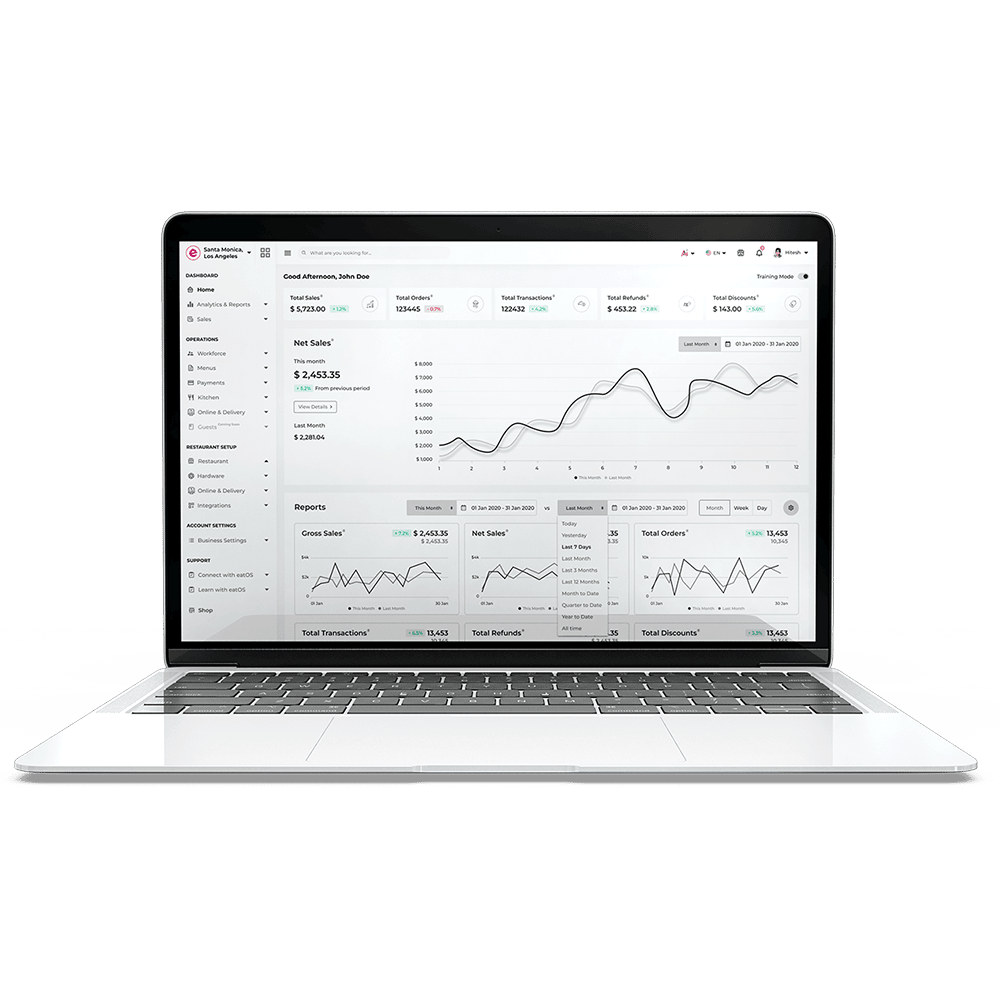
Data-driven insights are invaluable for making informed business decisions and optimizing performance. Restaurant management systems offer robust reporting and analytics capabilities, providing actionable insights into sales trends, operational efficiency, and customer behavior.
Comprehensive Sales Reports: From daily sales summaries to detailed transaction reports, restaurant management systems generate comprehensive sales reports that provide visibility into revenue performance across various timeframes, locations, and menu items. These insights enable managers to identify top-selling items, analyze revenue trends, and make data-driven pricing decisions.
Performance Analysis and Insights: Beyond sales figures, modern POS systems offer performance analysis tools that delve deeper into operational metrics such as table turnover rates, average order value, and employee performance. By tracking key performance indicators (KPIs), managers can identify areas for improvement, optimize workflows, and enhance overall efficiency.
Forecasting and Trend Analysis: Anticipating demand and staying ahead of market trends is essential for maintaining a competitive edge. Restaurant management systems leverage historical sales data and advanced forecasting algorithms to predict future demand, enabling businesses to optimize inventory levels, staff scheduling, and menu offerings accordingly. Additionally, trend analysis tools help identify emerging consumer preferences and adapt business strategies to capitalize on new opportunities.
Modern restaurant management systems offer a comprehensive suite of features and functionalities designed to enhance efficiency, optimize operations, and deliver exceptional customer experiences. From seamless order management and inventory control to CRM and analytics, these systems empower restaurant owners and managers to stay ahead of the curve in today’s dynamic and competitive landscape. By leveraging the power of technology, restaurants can streamline operations, drive revenue growth, and cultivate lasting relationships with their patrons.
Benefits of Odoo POS for Restaurants

-
Enhanced Efficiency and Productivity
1.1 Streamlined Order Processing
With Odoo POS, the days of cumbersome order taking and manual ticket scribbling are long gone. The intuitive interface allows servers to swiftly input orders, customize items, and send them directly to the kitchen—all at the tap of a finger. This streamlined process minimizes errors and ensures that orders are accurate and promptly fulfilled.
1.2 Reduced Manual Errors
Human errors can be costly in the restaurant business, leading to incorrect orders, disgruntled customers, and wasted resources. Odoo POS mitigates these risks by automating various aspects of the ordering and payment process, thereby minimizing the likelihood of mistakes and enhancing overall operational efficiency.
1.3 Faster Service and Turnaround Times
In the fast-paced world of hospitality, speed is of the essence. Odoo POS empowers restaurants to deliver prompt and efficient service, enabling quicker table turnovers and reducing wait times for diners. By expediting the ordering, preparation, and payment processes, restaurants can enhance customer satisfaction and capitalize on higher throughput.
-
Improved Customer Experience
2.1 Personalized Service and Recommendations
In an era where personalization reigns supreme, Odoo POS enables restaurants to cater to the unique preferences of their patrons. With access to comprehensive customer profiles and purchase history, servers can offer personalized recommendations, promotions, and special offers, fostering deeper connections and enhancing the overall dining experience.
2.2 Efficient Table Management
Efficiently managing table turnover and optimizing seating arrangements are crucial for maximizing revenue and minimizing wait times. Odoo POS provides robust table management capabilities, allowing restaurants to track table statuses in real-time, assign servers efficiently, and streamline the seating process for optimal guest satisfaction.
2.3 Faster Payment Processing
Bid farewell to lengthy wait times at the checkout counter. Odoo POS facilitates swift and hassle-free payment processing, offering diverse payment options including credit/debit cards, mobile wallets, and contactless payments. By expediting the settlement process, restaurants can enhance customer convenience and streamline operations.
-
Cost Savings and Resource Optimization
3.1 Reduced Food Wastage Through Better Inventory Management
Effective inventory management is critical for minimizing food wastage and maximizing profitability. Odoo POS integrates seamlessly with inventory management modules, enabling real-time tracking of stock levels, automatic reordering, and precise forecasting. By optimizing inventory levels and reducing spoilage, restaurants can significantly cut down on costs and enhance sustainability.
3.2 Lower Labor Costs with Optimized Workflows
Labor costs constitute a significant portion of a restaurant’s expenses. With Odoo POS, restaurants can automate repetitive tasks, optimize staffing levels, and streamline workflows for greater efficiency. From automated order routing to intelligent scheduling, Odoo POS empowers restaurants to minimize labor costs while maintaining optimal service levels.
3.3 Elimination of Hardware and Maintenance Expenses
Traditional POS systems often entail hefty upfront investments in hardware and ongoing maintenance costs. Odoo POS, on the other hand, operates on a cloud-based platform, eliminating the need for expensive hardware installations and reducing maintenance overheads. This cost-effective approach enables restaurants to allocate resources more efficiently and invest in areas that drive growth and innovation.
-
Scalability and Flexibility

4.1 Easily Adaptable to Varying Business Needs
Whether you operate a small bistro or a sprawling restaurant chain, Odoo POS offers unparalleled scalability and flexibility to accommodate your evolving business needs. With customizable features and modular design, Odoo POS can be tailored to suit the unique requirements of any restaurant, ensuring seamless integration and future-proof scalability.
4.2 Seamless Integration with Other Odoo Modules
Integration is the cornerstone of operational efficiency. Odoo POS seamlessly integrates with other modules within the Odoo ecosystem, including inventory management, accounting, and customer relationship management (CRM). This unified approach streamlines data sharing, enhances visibility, and empowers restaurants to make informed decisions based on comprehensive insights.
4.3 Support for Multi-location Restaurants
For restaurant chains with multiple locations, centralized management is essential for maintaining consistency and control. Odoo POS offers robust multi-location support, enabling centralized administration, unified reporting, and synchronized data across all outlets. Whether you operate two or two hundred locations, Odoo POS provides the scalability and flexibility to support your growth trajectory.
Odoo POS emerges as a game-changer for restaurants seeking to enhance efficiency, elevate customer experience, optimize costs, and foster scalability. By leveraging the power of technology and innovation, restaurants can transform their operations, stay ahead of the curve, and delight diners at every touchpoint. Embrace Odoo POS today and embark on a journey towards culinary excellence and operational excellence.
Conclusion
In conclusion, Odoo Point of Sale presents a game-changing solution for restaurants seeking to optimize operations, enhance customer experience, and drive profitability. With its robust features, seamless integration, and scalability, Odoo POS empowers restaurateurs to stay ahead in a competitive industry landscape. By embracing innovation and leveraging the power of technology, restaurants can embark on a journey towards greater efficiency, sustainability, and success.

